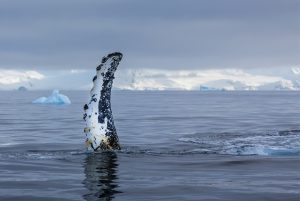The Inuit of Grise Fiord, Nunavut, know that the frigid waters of nearby Jones Sound — covered in ice for all but six weeks of the year — are teeming with life. They’re intimately familiar with the seals, walrus, whales and polar bears with which they share the sound and which provide them with food. But what of the other, unseen creatures that live far below the surface? Are there deepwater food species that might be abundant enough to supplement the diet of Grise Fiord’s 130 residents, or even support a small commercial fishery like those in several other Inuit communities?
Marine biologist Laura Wheeland, of the Centre for Fisheries Ecosystems Research at the Fisheries and Marine Institute of Newfoundland’s Memorial University, has been collaborating with the Arctic Fisheries Alliance, a group of four Nunavut communities, to find out. Her team’s discoveries have not only caused excitement in Grise Fiord, they’re also helping to fill in a major gap in knowledge of the Arctic environment. “Jones Sound is very large, and its marine ecosystem is unexplored,” she explains. “The only record of species we have is a collection of bottom-dwelling invertebrates made by Norwegian scientists in about 1900.” (Those scientists were members of Norwegian explorer Otto Sverdrup’s 1898-1902 expedition.)
For about two weeks during the summer of 2014, Wheeland and doctoral student Brynn Devine probed the waters of Jones Sound aboard the Arctic Fisheries Alliance fishing vessel Kiviuq I, whose crew included a resident of Grise Fiord. “Each day”, says Wheeland, “the crew would set longlines and whelk pots baited with squid, and then 12 to 24 hours later come back to see what had been caught. Brynn and I were on board to identify the catch and collect data. We also measured water temperature to a depth of 850 metres and collected zooplankton and benthic (bottom dwelling) species.”
The results were gratifying, both for the researchers and the community. It turns out that Jones Sound’s bone-chilling waters are home to a magnificent array of undersea creatures: sea stars, sea spiders, sea anemones, quirky bottom dwellers called sea-pigs (pictured), polar sculpins, Arctic skates, Greenland sharks, turbot (Greenland halibut) and large quantities of whelk (sea snails) and shrimp.
“Now we have some baseline data on the Jones Sound marine environment,” says Wheeland. “What fish are there and where, the temperature and chemistry and so on. With long-term monitoring, we’ll be able to measure change in the ecosystem over time.”
But to the people of Grise Fiord, the biggest news was the shrimp. A community feast starring the newly discovered local crustaceans was a resounding success. And not only are Jones Sound shrimp tasty (“Very sweet,” enthuses Wheeland), they and the whelk may be plentiful enough to support a local fishery — a boost to a small community with few sources of income. “People are very excited to find out about this new resource close to where they live,” says Wheeland. “They’re ordering shrimp pots, to investigate further.”
This is the latest in a continuing blog series on polar issues and research presented by
Canadian Geographic in partnership with the Canadian Polar Commission. The polar blog appears online every two weeks, and select blog posts are featured in issues of
Canadian Geographic. For more information on the Canadian Polar Commission, visit
polarcom.gc.ca.






